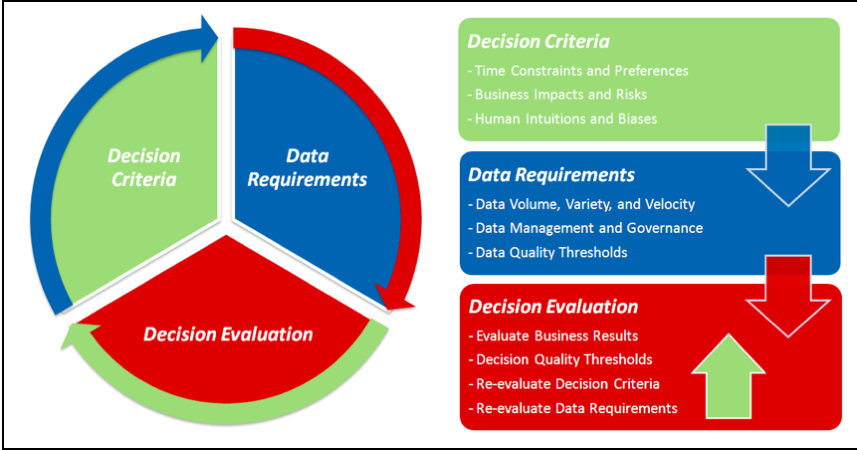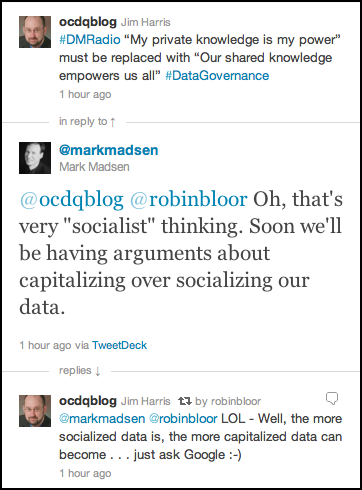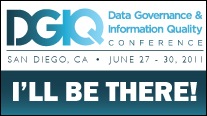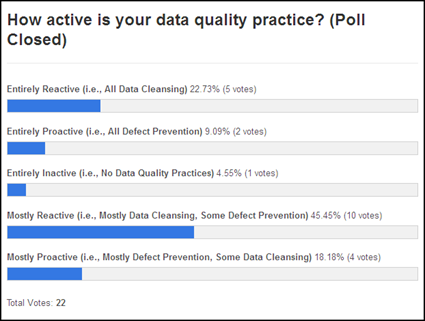You only get a Return from something you actually Invest in
/In my previous post, I took a slightly controversial stance on a popular three-word phrase — Root Cause Analysis. In this post, it’s another popular three-word phrase — Return on Investment (most commonly abbreviated as the acronym ROI).
What is the ROI of purchasing a data quality tool or launching a data governance program?
Zero. Zip. Zilch. Intet. Ingenting. Rien. Nada. Nothing. Nichts. Niets. Null. Niente. Bupkis.
There is No Such Thing as the ROI of purchasing a data quality tool or launching a data governance program.
Before you hire “The Butcher” to eliminate me for being The Man Who Knew Too Little about ROI, please allow me to explain.
Returns only come from Investments
Although the reason that you likely purchased a data quality tool is because you have business-critical data quality problems, simply purchasing a tool is not an investment (unless you believe in Magic Beans) since the tool itself is not a solution.
You use tools to build, test, implement, and maintain solutions. For example, I spent several hundred dollars on new power tools last year for a home improvement project. However, I haven’t received any return on my home improvement investment for a simple reason — I still haven’t even taken most of the tools out of their packaging yet. In other words, I barely even started my home improvement project. It is precisely because I haven’t invested any time and effort that I haven’t seen any returns. And it certainly isn’t going to help me (although it would help Home Depot) if I believed buying even more new tools was the answer.
Although the reason that you likely launched a data governance program is because you have complex issues involving the intersection of data, business processes, technology, and people, simply launching a data governance program is not an investment since it does not conjure the three most important letters.
Data is only an Asset if Data is a Currency
In his book UnMarketing, Scott Stratten discusses this within the context of the ROI of social media (a commonly misunderstood aspect of social media strategy), but his insight is just as applicable to any discussion of ROI. “Think of it this way: You wouldn’t open a business bank account and ask to withdraw $5,000 before depositing anything. The banker would think you are a loony.”
Yet, as Stratten explained, people do this all the time in social media by failing to build up what is known as social currency. “You’ve got to invest in something before withdrawing. Investing your social currency means giving your time, your knowledge, and your efforts to that channel before trying to withdraw monetary currency.”
The same logic applies perfectly to data quality and data governance, where we could say it’s the failure to build up what I will call data currency. You’ve got to invest in data before you could ever consider data an asset to your organization. Investing your data currency means giving your time, your knowledge, and your efforts to data quality and data governance before trying to withdraw monetary currency (i.e., before trying to calculate the ROI of a data quality tool or a data governance program).
If you actually want to get a return on your investment, then actually invest in your data. Invest in doing the hard daily work of continuously improving your data quality and putting into practice your data governance principles, policies, and procedures.
Data is only an asset if data is a currency. Invest in your data currency, and you will eventually get a return on your investment.
You only get a return from something you actually invest in.
Related Posts
Can Enterprise-Class Solutions Ever Deliver ROI?
Do you believe in Magic (Quadrants)?
Which came first, the Data Quality Tool or the Business Need?
What Data Quality Technology Wants
A Farscape Analogy for Data Quality













